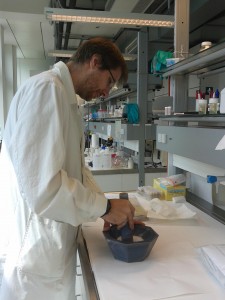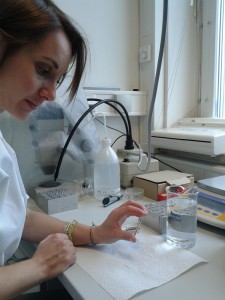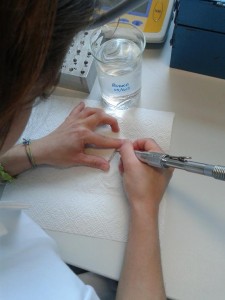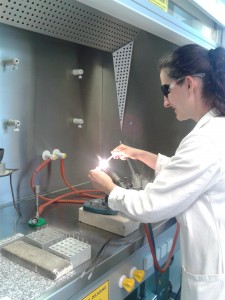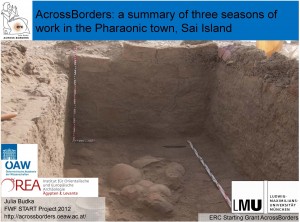When, at the time of the New Kingdom, the Egyptians came to Sai Island in Upper Nubia and founded a Pharaonic town, they settled on the island taking with them their own traditions – but they also made contact with the indigenous Nubian cultures and adopted part of the local customs. Thus, Sai Island soon became for them a “home away from home”.
Well, I can say that in the last two years since I left Italy for joining AcrossBorders, Vienna became as well for me something very similar to a “second home.” Still, now that the project moved to Munich, if I have the chance to go there because of my work, I feel like coming back home.
So nothing better than a one-week business trip to the Institute of Atomic and Subatomic Physics (AI) in Vienna to mitigate a little my “homesickness” and, most of all, together with Johannes Sterba, to take stock of our INAA chemical data! After two years there are more than 200 samples.
The main purpose of this Viennese “reunion” at the AI was to elaborate some of our recent results in view of the forthcoming workshop in Munich. In particular, during the last week Johannes Sterba and I have been focusing on our numerous set of Nubian samples – from the Khartoum Variant (c. 7400 – 5000 BC) till the New Kingdom period (c. 1550 – 1300 BC) – with the intent of linking the compositional data with the macroscopic and petrographic information we have about the local pottery and to look in detail at the chemical behavior of the Nubian samples.
Is it possible to recognize any variability in the use of the clay raw materials and tempers and in the pottery recipes through the course of the different chronological horizons? And what happened at the time of New Kingdom when for the first time Egyptian and Nubian ceramic traditions coexisted on Sai Island?
Apologies, but I am not going to reveal much more now as we prefer to keep you curious for the workshop! I can just say that Johannes and I were quite busy (but we had as well some fun) trying to plot different chemical elements against each other and to figure out how the samples might cluster (or not) according to their chemistry.
Besides that, spending one week at the AI gave also to me the opportunity to enjoy once again the unique atmosphere of the lab (I somehow like the smell of acetone and distillate water and all the chemical devices and small vials of which the lab is plenty) and to prepare a new bunch of 43 samples from our last field season in the winter of 2015.
The new bunch of samples mostly includes local Nubian and Egyptian style Nile clays plus a number of Egyptian cooking pots and decorated ware which according to their macroscopic features could be imported on Sai Island from Egypt and we are now going to test by means of INAA analysis.
The protocol we adopted for their preparation was exactly the same we used in the past:
1- few grams of sample were manually ground in an agate mortar into fine powder and temporally stored in small plastic vials
2- the samples were dried over the night at 90°C in a kiln
3- around 100 mg of sample were weighed and sealed into Suprasil glass vials waiting for irradiation.
All these operations require a lot of patience and concentration. Once again, the expertise and the great support of Michaela Foster, technical assistant at the AI in Vienna, were essential to me in the lab and I would like to thank her deeply.
Some more potsherds from 2015 are still waiting to be prepared in the lab so that at the end of this year our total number of samples will amount at more than 300.
With the hope to come soon back to Vienna (my personal “home away from home”) and to prepare more of our samples, I am now looking forward for the upcoming workshop here in Munich!

